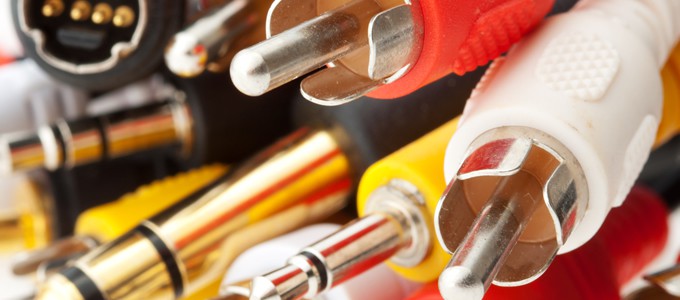Most people don’t enjoy the work involved with packing for a move – let’s face it, it’s a drag. With some things, like electronics, it’s essential that you take the time to do a good job. Audio, video and computer equipment is easily damaged and expensive to replace, so unless you’re looking for an excuse to upgrade, it’s well worth your time.
1. The Essentials
Following these 4 guidelines will help with almost all of your electronics.
- Electronics, especially anything with a microchip, is vulnerable to static electricity. You should use antistatic bubblewrap/bubbles or popcorn to ensure your electronics aren’t damaged. If you don’t have any of this handy, you request it from your movers, or you can get it online or at electronics stores.
- If you still have the manufacturer’s guide or user guide for your equipment, refer to it for detailed instructions on moving the item. Alternatively, check the manufacturer’s website for user guides.
- When your electronic goods have a complex wiring set up, it’s a good idea to label wires and draw a diagram as you dismantle the item, that way it is far easier to set up again in your new home.
- Mark any boxes containing electronics with a clear label that says “fragile”.
2. Packing Your Flat Screen TV
When you’re moving, the simplest option for packing your flat screen TV is to re-package it inside the box in which you purchased it. Not everyone has the room to store the original boxes, though. Another option is to purchase specialist boxes, specifically designed for moving electronics. The third and simplest option is to pack your television like this:

Free Ultimate Moving Checklist
Say goodbye to moving stress with our 2025 residential moving checklist for Canada—it’s the ultimate time-saver!
Download Now- Wrap a microfibre towel or blanket around your TV and seal the package with tape. This protects your television and ensures the screen is not scratched (watch out – some other fabrics that seem soft can scratch).
- Wrap and seal a few layers of antistatic bubble wrap around the package to make sure you provide enough protection. A box or thick sheets of cardboard will ensure it remains intact throughout the removal process.
- Flat screen TVs aren’t heavy, but they can be awkward. When moving the TV, it should be carried by two people so it doesn’t get dropped, then placed in a secure location inside the truck. Ideally place it on top of something that will absorb shocks from driving along rough roads, like a thick, cushiony moving blanket.
- All flat screen TVs need to stay upright. Lying it flat means more risk to the screen. You also need to make sure it can’t tip over. If you’re moving the TV in your car, use a seat belt to secure the package.
3. Packing Your Sound System
Your sound system may be a large and complex surround sound system or a simple one-unit piece of equipment, but either way similar steps apply.
As with your other delicate electronics, the ideal scenario is that you re-pack your sound system in its original packaging or inside specialist electronics boxes, which are fairly expensive to purchase. If you choose either of these packing methods, you should still ensure the sound system is wrapped securely inside layers of antistatic bubble wrap. Here’s how to pack your sound system safely:
- Unplug all wires from the outlets and coil them neatly, tying with string, rubber bands or zip ties. Use tape to secure them to the unit, so they don’t work loose in transit.
- Wrap the sound system in a couple of layers of antistatic bubble wrap and secure with tape.
- Pack the unit into the chosen box, then add newsprint or regular bubblewrap around the unit to provide extra cushioning during the move.
- Close the box lid and seal well with tape. Label this box carefully so everybody involved in your home removal is aware the contents are fragile.
4. Packing Your Computer
Consult the user guide provided with the computer to find out if you need to follow any special packing instructions.
You should remove ink cartridges from printers prior to packing. It’s usual to remove all CDs, DVDs and other storage media from computers prior to packing (although some user guides stipulate that CDs should remain inside the “A” drive of computers to protect the drive from damage).
Use the following packing method to ensure your computer is safely stored and transported to your new home:
- If you don’t have the original box for your unit, use a double-walled box for extra protection when packing.
- Use labels or tags to mark each wire and corresponding port on the computer, so you can easily connect it up when you arrive in your new home. Creating a diagram or written instructions giving detailed guidelines of how you disconnected the computer may also prove useful.
- Tie all your loose cables securely using zip ties or rubber bands and place them inside a bag which can be taped to the computer so no parts go astray.
- Disconnect the varied parts of the computer and wrap separately in antistatic bubble wrap.
- Line the base of your box with a deep layer of bubblewrap or popcorn and place the computer parts inside with the heaviest at the bottom, carefully fill all spaces with packaging to ensure the parts are protected.
- Seal the box and add a label to ensure it is treated with care during the removal.
Packing your electronic equipment carefully and labeling boxes should help ensure your items arrive at your new home safely. If you’re working with professional movers, tell them about your fragile items so they can take extra care. If you’ve followed the instructions, you should be able to connect everything up quickly in your new home and start enjoying.
Does all this sound like too much hassle? Maybe you’re ready to hire professional movers who will take this kind of care with your electronics.

